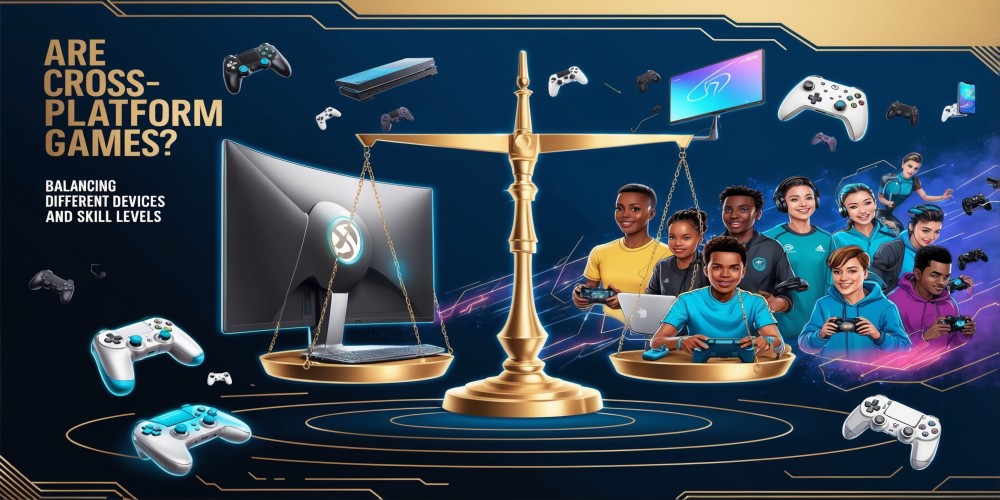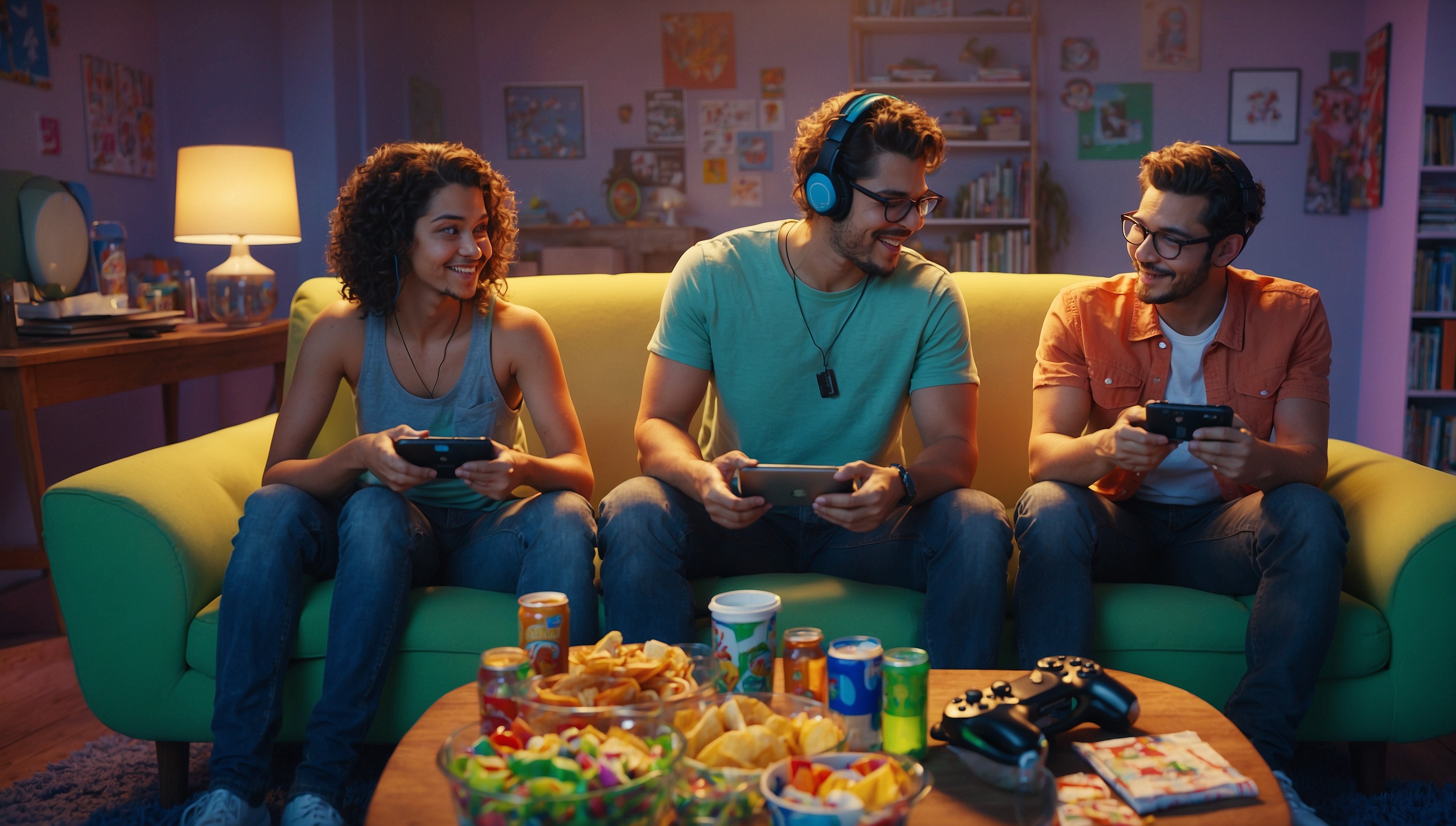Fairness Debate in Cross-Platform Video Games
Aug-30-2024

Cross-platform gaming is like the ultimate bridge in the world of gaming. It lets players from different devices—be it PC, console, or mobile—connect and play together. On the surface, it seems like a dream come true. Imagine taking on your friends, whether they’re wielding a controller on their Xbox or tapping away on a smartphone. But, the real question is, are cross-platform games truly fair? How do you balance the differences between devices and the skill gaps that naturally come with them? Let’s dig into the nitty-gritty and find out if the scales are really balanced or if some players are left holding the short end of the stick.
Different Devices, Different Advantages
One of the most obvious challenges with cross-platform games is that different devices come with different advantages—and disadvantages. Think about it: a PC player has a mouse and keyboard, which offers a level of precision that’s hard to match. This is especially true in first-person shooters, where every headshot counts. Meanwhile, console players use controllers, which might feel a bit slower when aiming, but often come with aim-assist features to make up for that. And then, you have mobile players, who rely on touch controls—let’s just say it’s a different ballgame altogether. The disparity between these control schemes can make it feel like some players are on a smooth racetrack while others are trudging through mud.
Aim Assist: A Blessing or a Curse?
Aim assist is one of those things that gets people talking—and not always in a friendly way. For console players, it’s a bit of a lifesaver when going up against those sharp-shooting PC players. But, from a PC gamer’s perspective, aim assist can feel like an unfair advantage. It’s like having a little guiding hand, nudging your crosshairs towards the target. Sure, it’s not perfect, but it can definitely turn the tide in a firefight. Some players argue that aim assist levels the playing field, while others claim it gives an unfair boost to console users. It's a classic case of "one man’s trash is another man’s treasure." It all comes down to perspective.
The Performance Gap: Framerates and Graphics
Then there’s the performance gap to consider. A high-end PC can run games at buttery-smooth framerates and crisper graphics, making every detail pop and every movement fluid. In contrast, consoles, even the latest ones, have their limitations. And mobile devices? They’re often far behind, struggling with lower frame rates and simplified visuals. While the gameplay might be the same at its core, the experience can feel drastically different. A PC player with a stable 120 FPS and top-notch graphics might spot an enemy in the distance that a console or mobile player might completely miss due to lower resolution or slower rendering. It’s like bringing a sword to a gunfight—sure, you can make it work, but it’s an uphill battle.
Skill Levels and Experience: The Great Divide

Even if you put hardware differences aside, skill levels can vary greatly depending on the platform. Players who’ve spent years mastering the art of keyboard-and-mouse controls might find it challenging to adapt to the slower pace of controller movements. On the flip side, console players might find the precision of a mouse overwhelming. And mobile players? They’re used to shorter sessions, often designed around quick swipes and taps, not marathon gaming sessions. It’s like mixing together sprinters and long-distance runners—they’re all great at what they do, but it’s tough to find common ground. This gap can make cross-platform matchmaking feel a little like rolling the dice—sometimes, you’re up against evenly matched opponents, and other times, you’re in for a rude awakening.
Matchmaking: The Art of Balancing Teams
Most developers try to balance these differences with skill-based matchmaking, but it’s far from a perfect science. Ideally, this system pairs players based on their performance, regardless of their platform. But as any gamer knows, matchmaking can be a bit hit or miss. Sometimes, it feels like you’re playing against opponents who are way out of your league, or worse, it pairs you with teammates who can’t keep up. And when you throw in cross-platform play, it becomes even trickier to balance. How do you weigh the skill of a seasoned PC veteran against a casual mobile player who just downloaded the game last week? It’s a tough nut to crack, and even the best matchmaking algorithms can struggle to make everyone happy.
The Social Side: Cross-Platform Play Unites (and Divides)
One of the biggest appeals of cross-platform games is the social aspect. It allows friends to play together, no matter what device they own. That’s a huge plus. Imagine not having to choose between hanging out with your console buddies or your PC crew—you can just dive into the same game and have a blast. But, there’s a flip side to that coin. Sometimes, the differences in devices and skill levels can create friction between friends. You might hear complaints like, “You only beat me because of your PC!” or “It’s the aim assist, not your skills!” It’s all fun and games until someone feels like they’re losing because of their hardware, not their abilities. And let's face it, no one likes feeling like they’re losing because of something beyond their control.
Is There a Perfect Solution?
The million-dollar question: is there a perfect solution to balance cross-platform games? Well, not really. Developers have tried different methods to level the playing field. Some games allow players to opt out of cross-platform matchmaking, so they can stick to competing against others on the same device. This way, console players can go up against other console players, and mobile players can keep it casual among themselves. It’s not a perfect fix, but it does help those who feel like they’re at a disadvantage.
Another approach is to create separate game modes or lobbies for different platforms, but that can fracture the player base and lead to longer matchmaking times. Plus, it goes against the very idea of uniting players across platforms. It’s like putting a fence in the middle of the playground—sure, it keeps things tidy, but it also limits the fun. In the end, it’s all about finding a balance between fairness and keeping the community together.
The Future of Cross-Platform Gaming: What Lies Ahead?

Looking forward, the future of cross-platform gaming will likely involve more sophisticated solutions to these challenges. As technology advances, we might see better input options for consoles or mobile devices, allowing players to compete more evenly. Who knows, maybe one day we’ll all be using a universal controller that bridges the gap between platforms. But until then, we’ll have to make do with the balancing act that developers are trying to master. It’s like walking a tightrope—one wrong move, and you’ve got a whole community ready to voice their frustrations.
Final Thoughts: Embrace the Chaos, Enjoy the Game
So, are cross-platform games fair? Well, it depends on how you look at it. Yes, there are undeniable challenges when it comes to balancing different devices and skill levels. Some players will always feel like they’re fighting with one hand tied behind their back. But at the same time, there’s something special about being able to connect with players from all over the gaming world, no matter what they’re playing on. It’s not always a perfectly even playing field, but that’s part of the charm.
In the end, cross-platform gaming is a bit like life—sometimes, you’ve got the advantage, and other times, you’ve got to work a little harder to keep up. But isn’t that what makes it fun? The unpredictability, the unexpected victories, and even the occasional crushing defeats. Consequently, when you next happen upon a situation where you are in a cross-platform match, remember to embrace the chaos, enjoy the ride, and, most importantly, have a good time. After all, at the heart of it, gaming is about coming together, sharing a few laughs, and creating memories—no matter what device you’re on.







